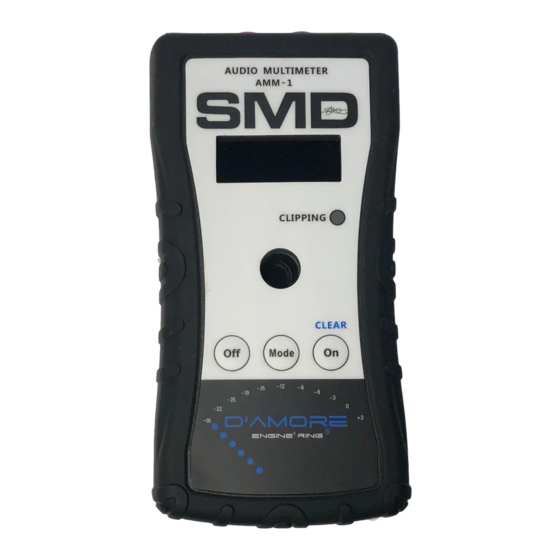D'Amore Engineering AMM-1 Manuel du propriétaire - Page 9
Parcourez en ligne ou téléchargez le pdf Manuel du propriétaire pour {nom_de_la_catégorie} D'Amore Engineering AMM-1. D'Amore Engineering AMM-1 16 pages. Smd

VA and Power Factor
What is VA, and what is Power Factor?
VA is the product of Volts RMS * Amps RMS. This is the
number that one would get if taking a conventional AC
Voltmeter and an AC Current clamp and then multiplying
the numbers together. Unlike DC where the voltage and
current are constantly flowing in one direction, AC
electricity has the voltage and current switching direction
back and forth in a circuit. Since Voltage and Current
and two different things, the changing of direction of the
voltage and current back and forth can happen at
different times. Clearly if the voltage and current
directions are opposite at any time there would be no
POWER happening and a True Power measurement
would be zero watts! Though multiplying Volts RMS and
Amps RMS in this case would give you a reading, the
Power Factor would be zero. The Power Factor is the
difference in time (or phase) between the Voltage and
Current expressed in a way that tells the user what
percentage of the VA is actual power (Watts).
This feature of being able to read the VA and Power
Factor is useful for several reasons. Here is one
example:
A SPL competitor plays a 50Hz tone, with a voltage
clamp and current clamp he measures 100V
and
RMS
50A
output from his amplifier to his subwoofers. He
RMS
might say the amplifier put out 100*50 = 5000 Watts.
That is incorrect. It would be 5000 VA. Now since the
subwoofers are not pure resistors the voltage and
current will likely be slightly out of phase. With the
AMM-1 the competitor repeats the test and finds the
output was 5000 VA with a power factor of 78%.
9
